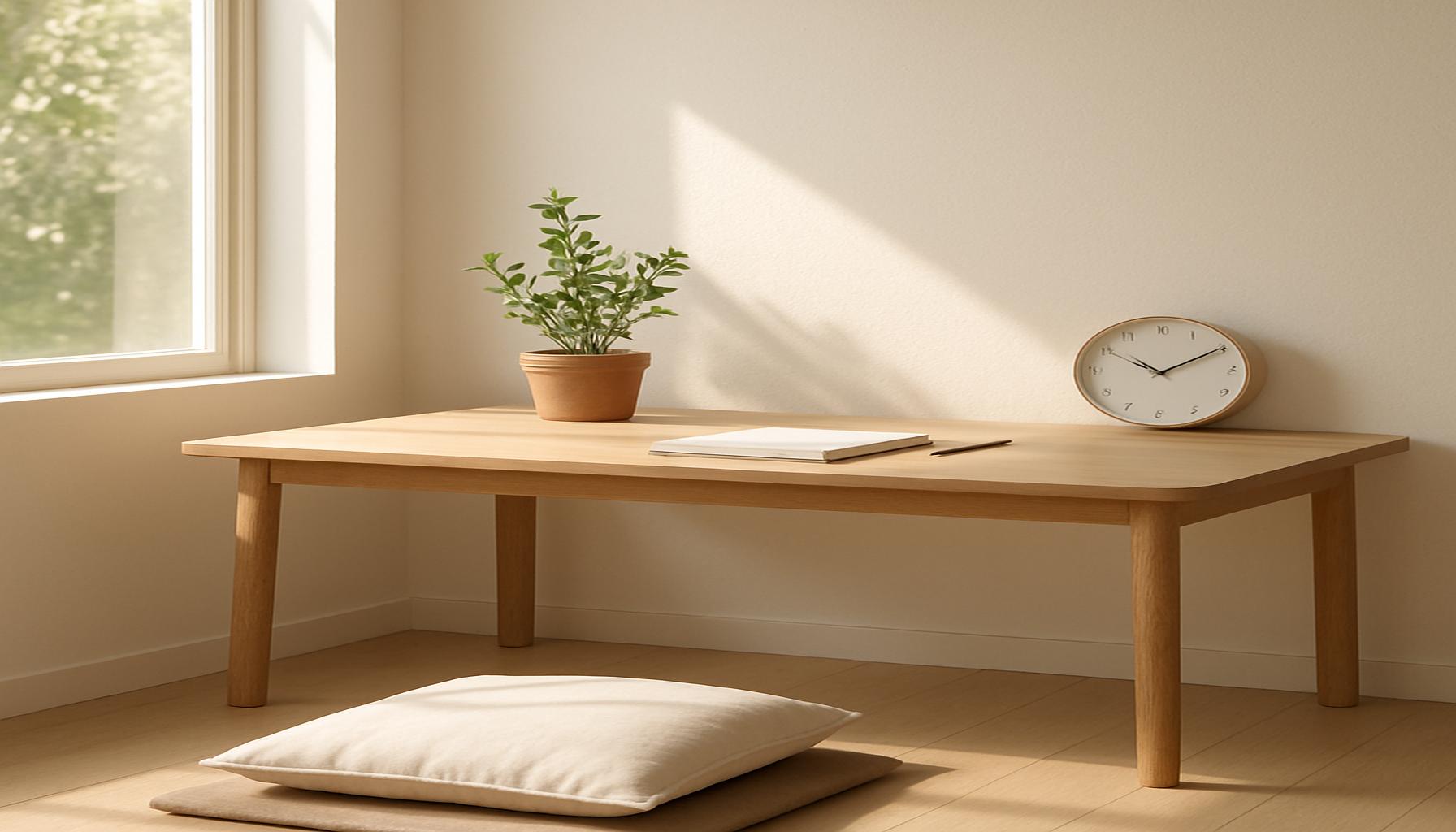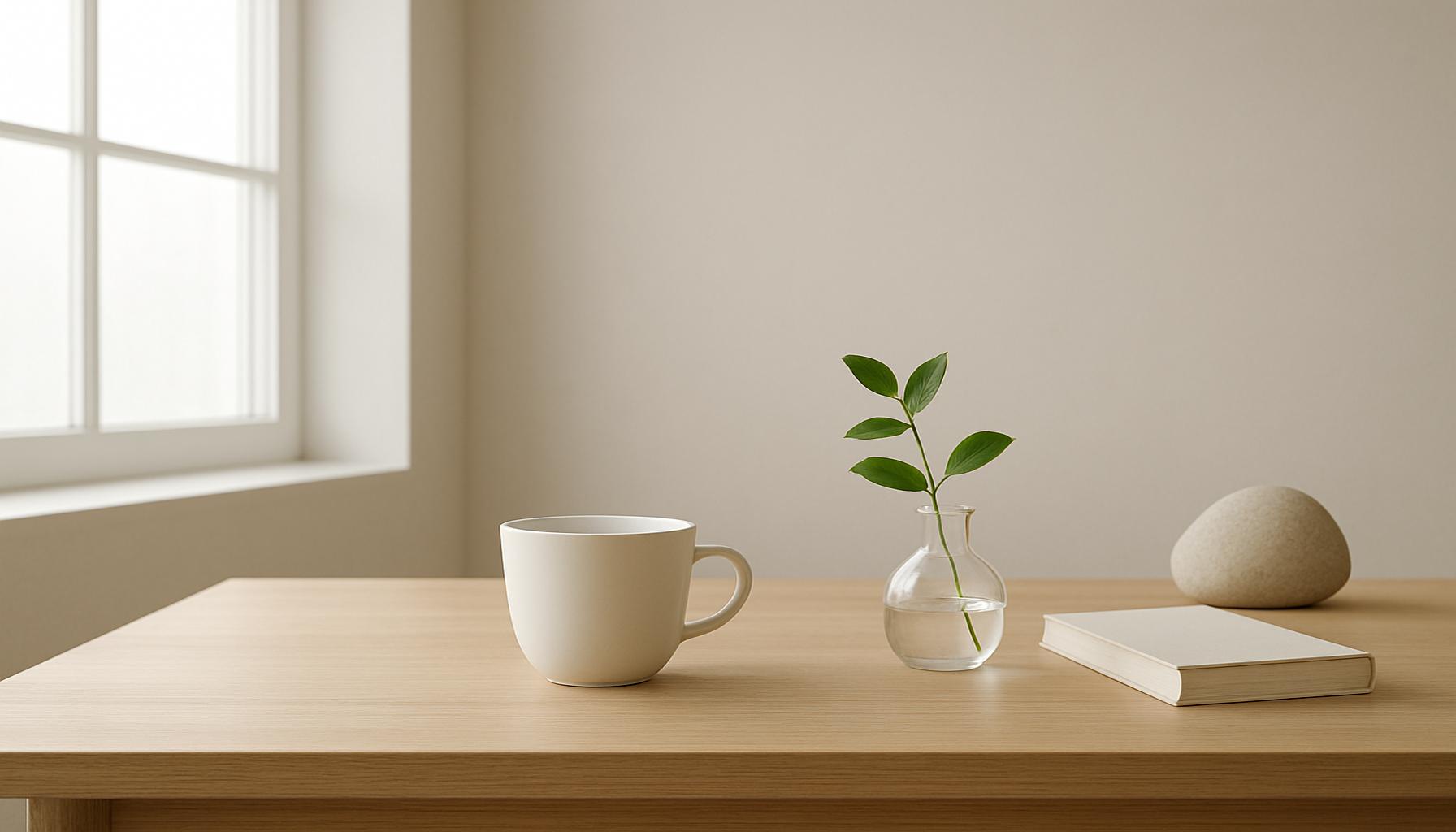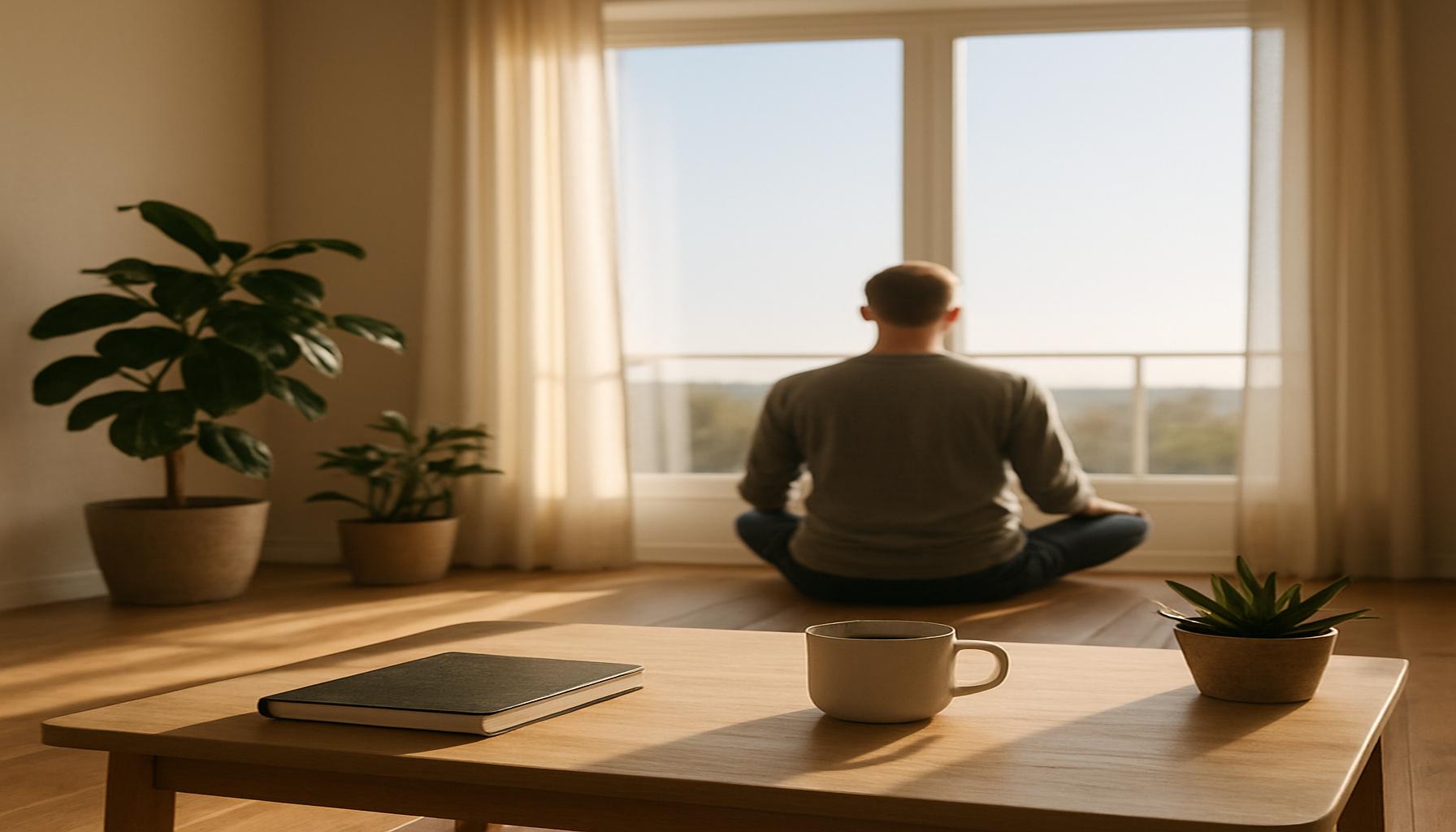The Art of Prioritizing: How Minimalism Can Transform Your Daily Routine

The Complexity of Modern Life
In our modern lives, characterized by rapid technological advancement and an ever-increasing array of obligations, the task of managing time effectively has become particularly daunting. Many individuals find themselves caught in a cycle of busyness, where the sheer volume of responsibilities – from work commitments to personal interests – can lead to feelings of overwhelm and stress. This has led to a pressing need for effective prioritization strategies that allow individuals to focus on what truly counts.
The Minimalist Approach
One compelling solution to this dilemma is the philosophy of minimalism. Originating in various cultural and artistic movements, minimalism advocates for simplifying one’s life by decluttering both physical spaces and mental processes. The principles of minimalism extend far beyond just owning fewer possessions; they offer profound ways to streamline daily routines and enhance productivity.
Selective Clutter Reduction
One key aspect of minimalism is the idea of selective clutter reduction. This process involves critically evaluating the items in your life to determine what truly serves your needs and aligns with your goals. For instance, consider the trend of KonMari, popularized by Marie Kondo, where individuals are encouraged to keep only those items that “spark joy.” This not only liberates physical space but also paves the way for a clearer mindset, allowing you to focus more on activities that promote well-being and happiness.
Mindful Decision-Making
Another fundamental principle is mindful decision-making. This involves carefully assessing tasks and obligations to ensure they align with your personal values and long-term objectives. By acknowledging what is truly important, you can channel your energy toward fulfilling endeavors. For example, if you value professional development, consider dedicating time to online courses or networking events rather than succumbing to time-consuming distractions like excessive social media browsing.
Time Management Strategies
Effective time management is also essential in harnessing the benefits of minimalism. It encourages individuals to allocate their time based on priority rather than urgency, which can oftentimes be misleading. The Eisenhower Matrix, for instance, is a well-known tool that helps categorize tasks into four quadrants based on urgency and importance, assisting you in identifying which tasks deserve immediate attention and which can be postponed or delegated.

Envision starting each day with a renewed sense of clarity and purpose. Imagine walking into a workspace that is not only organized but reflects your goals and aspirations. By implementing minimalist principles, you can combat feelings of anxiety and overwhelm, leading to greater satisfaction and well-being.
The Path Forward
As you explore the art of prioritization through a minimalist lens, you may find that the benefits extend far beyond just improved productivity. Embracing minimalism could lead to profound changes in your perspectives, fostering a sense of freedom and enhancing the quality of your daily life. The journey towards simplification and effective prioritization begins now, inviting you to discover profound insights and practices that can reshape your world.
DISCOVER MORE: Click here to uncover the emotional benefits of decluttering
Rediscovering Focus Through Minimalism
The journey to mastering prioritization begins with a conscious effort to embrace simplicity and clarity in our lives. By adopting a minimalist mindset, individuals can strip away the unnecessary layers of obligations and distractions that often cloud their judgment and scatter their focus. To truly harness the transformative power of minimalism, it is essential to understand its core principles and how they can be applied to daily routines.
Establishing Core Values
Central to the minimalist approach is the notion of identifying and establishing core values. These values act as a guiding compass, assisting individuals in making informed decisions about where to allocate their time and resources. Begin by reflecting on what matters most in your life. Consider the following questions:
- What are the three most significant aspects of your personal and professional life?
- Which activities bring you the most joy and satisfaction?
- What goals do you want to prioritize over the next year?
By answering these questions, you can create a clear vision of your priorities. This newfound clarity allows you to discern which tasks are truly vital and which merely serve as distractions from your core objectives. With your values laid out, you can focus on aligning your daily activities with what genuinely matters, fostering a sense of purpose and direction.
The Power of Saying No
One of the most challenging yet liberating aspects of minimalism is the ability to saying no. While embracing opportunities is essential for personal and professional growth, overcommitting can lead to burnout and dissatisfaction. Learn to evaluate requests and invitations through the lens of your core values. When presented with a new obligation, ask yourself:
- Does this align with my core values?
- Will it advance my long-term goals?
- Am I genuinely interested in this commitment?
If the answer is “no,” don’t hesitate to decline. This selective approach not only frees up time for meaningful pursuits but also reinforces your commitment to prioritizing what is truly significant in your life.
Creating Intentional Routines
Minimalism encourages the development of intentional routines that eliminate redundancy and promote efficiency. Begin by evaluating your current daily habits. Identify activities that consume significant time without providing substantial returns. Look for opportunities to streamline or eliminate these tasks. For instance, consider incorporating batch processing into your schedule, where you group similar tasks together—such as emails, household chores, or project work—to maximize productivity.
Additionally, consider time-blocking, a strategy that allows you to allocate specific periods for focused work, leisure activities, and self-care. By intentionally structuring your day around meaningful endeavors, you can create a rhythm that honors your priorities and fosters a sense of balance.
Embracing the Minimalist Lifestyle
The art of prioritizing through minimalism is an ongoing practice that invites continuous reflection and refinement. As you cultivate a more mindful approach to your daily routine, the benefits—improved focus, increased satisfaction, and a clearer sense of purpose—will become evident. This transformative journey underscores the profound impact that embracing minimalism can have on not just your routine, but your overall quality of life.
The Benefits of Embracing Minimalism in Your Daily Life
When we consider the daily hustle and bustle, the concept of minimalism tends to get lost in the chaos. However, embracing minimalism can lead to profound changes in our productivity and mental clarity. The idea is not only about physical decluttering but also about creating space for what truly matters in our lives. By adopting a minimalistic approach, individuals often report enhanced focus and reduced anxiety, leading to a more fulfilling existence.Another key benefit of minimalism is the ability to prioritize effectively. With fewer distractions, it becomes easier to assess what needs immediate attention. This intentional approach allows individuals to allocate time and energy towards meaningful tasks, enhancing satisfaction in accomplishments. Understanding how to streamline our routines becomes essential for success in both personal and professional spheres.The integration of minimalism directly correlates with enhancing mental health. Studies indicate that a decluttered environment can significantly reduce stress levels, contributing to improved emotional well-being. By simplifying our surroundings, we inadvertently simplify our thoughts, allowing greater mental agility to tackle challenges.By taking these principles of minimalism to heart and applying them to everyday scenarios, anyone can experience a profound transformation. From enhancing focus to improving emotional health, the art of prioritizing becomes not only possible but a nurturing element of daily existence. To dive deeper into how minimalism can improve your daily routine, consider the suggestions provided in the article. Each practical step you take will help you embrace this transformative journey toward a more intentional lifestyle.
| Advantages | Impact on Daily Life |
|---|---|
| Enhanced Focus | Allows for clearer thought processes through less distractions. |
| Reduced Stress | Creates a calming environment, helping to lower anxiety levels. |
With the power of minimalism, optimizing daily routines becomes not just an aspiration but a reachable goal. Each small adjustment paves the way for a more intentional and serene life.
DISCOVER MORE: Click here to dive deeper
Navigating Distractions and Cultivating Mindfulness
In a world characterized by constant notifications and overwhelming information, one of the pivotal shifts inherent in the minimalist lifestyle is its emphasis on mindfulness. Mindfulness, the practice of being present and fully engaged in the moment, offers a powerful antidote to the distractions that perpetually vie for our attention. By integrating mindfulness into daily routines, individuals can enhance their productivity while simultaneously nurturing their mental and emotional well-being.
Limiting Digital Distractions
As technology dominates our everyday lives, it’s imperative to assess the role of digital devices in creating mental clutter. Social media platforms, emails, and streaming services can quickly become a black hole of distraction. To mitigate this, consider implementing digital detoxes where you intentionally disconnect from devices for designated periods. This could look like a tech-free weekend or even setting specific times during the day when you won’t check your emails or social media.
Additionally, utilize tools such as website blockers that restrict access to distracting sites during work hours. Creating a focused digital environment can significantly enhance your ability to prioritize essential tasks, allowing you to concentrate on your goals without the constant pull of online distractions.
Journaling for Clarity
Another effective practice in the minimalist paradigm is journaling. This age-old method serves as an invaluable tool for self-reflection and prioritization. By setting aside a few minutes each day to jot down your thoughts, priorities, and achievements, you cultivate a clearer understanding of your day-to-day objectives. Journaling can also help track your emotional responses to various activities, providing insight into whether those tasks align with your core values.
Consider using a structured journaling approach, such as the “three priorities” method, where you identify the three most critical tasks to focus on each day. This simple exercise not only promotes accountability but also fosters a sense of accomplishment as you check off completed tasks, reinforcing your commitment to a minimalist approach.
Creating a Calming Environment
A minimalist lifestyle extends beyond our internal processes; it also encompasses our physical environments. A cluttered space can lead to a cluttered mind. Therefore, one of the most effective strategies for enhancing focus is to create a calming and organized workspace. Begin by decluttering your physical environment, removing items that do not serve a functional or aesthetic purpose.
Subsequently, introduce elements that promote tranquility. Incorporate natural elements such as plants or soothing scents through essential oils, which can positively affect mood and productivity. By fostering a serene atmosphere, you create an environment conducive to focusing on what truly matters, allowing you to maximize your daily output and effectiveness.
Reflecting and Adjusting
As you embrace minimalist practices, it is crucial to recognize that prioritization is not a static endeavor. Regularly reflect on your goals, values, and routines to adjust and adapt your priorities as necessary. Life’s circumstances shift, and what was once a top priority may no longer hold the same weight. By maintaining a flexible mindset and embracing change, you further cultivate resilience and a deeper understanding of what it means to lead a purposeful life.
In a culture that often glorifies busyness, adopting a minimalist approach allows for profound introspection and enables individuals to reclaim their time and energy. By harnessing the power of mindfulness, creating intentional spaces, and reflecting on personal values, you can master the art of prioritization in a manner that enhances your daily routine and overall quality of life.
DIVE DEEPER: Click here to uncover the secrets of minimalism
Embracing Minimalism for a Meaningful Life
In conclusion, the journey towards mastering the art of prioritizing through minimalism is not merely about decluttering physical spaces; it is a holistic approach that fosters intentional living. By recognizing the importance of what truly matters in our lives, we can reshape our daily routines to reflect our core values, helping us navigate the overwhelming noise of modern existence. The techniques discussed—from implementing mindfulness practices and limiting digital distractions to journaling and creating a tranquil environment—offer practical solutions to enhance both productivity and emotional well-being.
Furthermore, as we cultivate a mindset of simplicity, we empower ourselves to periodically reflect and adjust our priorities, ensuring they remain in alignment with our evolving lives. This adaptability is essential as we embrace the inevitability of change, making our quest for fulfillment a dynamic and enriching experience. In a society that often equates busyness with success, adopting a minimalist approach serves as a gentle reminder that a less cluttered life can lead to deeper connections and greater satisfaction.
Ultimately, the transformative power of minimalism lies in its ability to guide us towards a more meaningful existence. As we delve deeper into the strategies of prioritization laid out in this article, we encourage you to explore this philosophy further, allowing it to open doors to clarity, focus, and a renewed appreciation for life. The question is not how much we can accomplish but how effectively we can align our actions with our true purpose.


